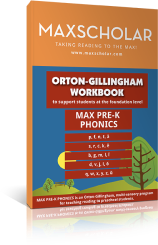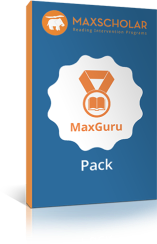Dyslexia Definition
Dyslexia is a specific learning disability that is neurological in origin. It is characterized by difficulties with accurate and/or fluent word recognition and by poor spelling and decoding abilities. These difficulties typically result from a deficit in the phonological component of language that is often unexpected in relation to other cognitive abilities and the provision of effective classroom instruction. Secondary consequences may include problems in reading comprehension and reduced reading experience that can impede growth of vocabulary and background knowledge.
—The International Dyslexia Association
For more info on dyslexia,
Myths about Dyslexia
- Any child who reverses letters or numbers has dyslexia.
- Dyslexia is a visual problem - people with dyslexia see words backwards and letters reversed.
- People with dyslexia see things backwards.
- If you don’t teach a child with dyslexia to read by age 9, then it’s too late for them to ever learn how to read.
- Mirror writing is a common symptom of dyslexia. Smart people cannot have dyslexia or have a learning disability.
- There is no way to diagnose dyslexia.
- Dyslexia cannot be diagnosed until third grade.
- Dyslexia is caused by lack of phonics instruction.
- People with dyslexia cannot learn to read.
- Children with dyslexia will never read well, so it’s best to teach them to compensate.
- Retaining a child (i.e., holding them a grade back) will improve their academic struggles.
- Most reading and resource specialists are highly trained in dyslexia and its remediation methods.
- Dyslexia can be cured or helped by special balancing exercises, fish-oils, glasses with tinted lenses, vision exercises, NLP Magical Spelling, modeling clay letters, inner-ear-improving medications, training primitive reflexes, eye occlusion (patching), etc.
Signs of Dyslexia
- Appears bright, highly intelligent, and articulate but unable to read, write, or spell at grade level.
- Labelled lazy, dumb, careless, immature, “not trying hard enough,” or “behavior problem.”
- High in I.Q., yet may not test well academically; tests better orally than written.
- Has poor self-esteem.
- Can be talented in art, drama, music, sports.
- Difficulty sustaining attention; easily distracted.
- Learns best through hands-on experience, and in the visual/auditory/tactile modalities.
- Confused by letters, numbers, words, sequences, or verbal explanations.
- Reading or writing shows repetitions, additions, transpositions, ommissions, substitutions, and reversals in letters, numbers, and/or words.
- Can read and reread with little comprenension.
- Spells phonetically and inconsistently.
- Confused by letters, numbers, words, sequences, or verbal explanations.
- Reading or writing shows repetitions, additions, transpositions, ommissions, substitutions, and reversals in letters, numbers, and/or words.
- Can read and reread with little comprenension.
- Spells phonetically and inconsistently.
- Trouble with writing or copying; pencil grip is unusual; handwriting has line placement issues.
- Can be clumsy, uncoordinated, poor at ball or team sports.
- Can be ambidextrous, and often confuses left/right, over/under.
- Excellent long-term memory for experiences, locations, and faces.
- Poor memory for sequences, facts and information that has not been experienced.
- Thinks primarily with images and feeling, not sounds or words (little internal dialogue).
- Has poor organizational skills.
- Can be class clown, trouble-maker, or too quiet.
- Had unusually early or late developmental stages (talking, crawling, walking, tying shoes).
- Is easily distracted.
We use the Orton-Gillingham approach, now available as an online program, and supported by workbooks and manipulatives. We also provide training for teachers, paraprofessionals, and parents.
When Should a Child
Be Evaluated?

Kindergarten
The tests for Kindergarten & beginning of 1st grade skills have standards for average that are generous.
- Children in late K or early 1st grade may only need to read a few letters & two or three common words to be “average.”
- Students with Dyslexia may not seem to be “behind.”
By Jan or Feb of 1st grade, tests begin to provide useful information
- Reading
- Decoding
- Spelling
Before 2nd Grade
Before 2nd grade, important to focus on precursors of reading development:
Measures of language skills...
- Phonological awareness
- Memory
- Rapid naming
...are more suggestive of being at-risk for dyslexia than are measures of
- Reading
- Decoding
- Spelling

Middle & Secondary School
- Reluctant readers
- Slow, word-by-word readers, who have difficulty with words in lists, nonsense words, and words not in their listening vocabulary
- Very poor spellers
- Non-fluent writers
- Have tendency to mispronounce words when speaking
- Listening comprehension is superior to performance on timed measures of reading comprehension
- Weak vocabulary knowledge and use.
For a complete list of all the instructional materials available to use for a child who has Dyslexia
The Orton Gillingham Approach
What Is
the
Orton-Gillingham
Approach?
Developed in the 1930s by Samuel Torrey Orton and Anna Gillingham is still believed to be the most effective dyslexia treatment.
- Personalized
- Multi-sensory Structured, Systematic, Sequential, and Cumulative
- Cognitive
- Flexible
- Personal & direct
- Systematic and direct instruction in:
- Phonemic Awareness
- Phonics
- Sounding out words
- Spelling
- Reading sight words
- Vocabulary and concepts
- Reading comprehension strategies
- Practice applying these skills in reading and writing
- Fluency training
- Enriched language experiences
Key Content Ingredients of Effective Early Intervention Programs
How Students with
Dyslexia
Need to Be
Taught
- Many commonly used reading programs are ineffective for students who have Dyslexia.
- Readers with Dyslexia benefit best from specific kinds of reading instruction. The Orton-Gillingham approach is the oldest and best researched method.
- Reading programs should incorporate this approach, using instruction that is explicit, intensive, and multi-sensory.
- Content should include phonemic awareness, fluency, and explicitly teaching of spelling rules.
- Assistive technology is opening the door to more efficient and effective methods for teaching reading.
If you cannot find a tutor trained in the Orton-Gillingham approach close to where you live, we can provide you with a tutor who will work with your child remotely over the Internet.
States with the “Dyslexia Law”

Image courtesy of https://www.dyslexicadvantage.org/dyslexia-laws-2018/
Schools/Districts
If you are in a state with a Dyslexia Law, we can help you meet your obligations to students with Dyslexia.
We offer a cloud-based Orton-Gillingham program, supplemented by workbooks and other instructional materials, which are designed for students with Dyslexia. We call this "Orton-Gillingham Approach Supercharged." We also have a Teacher Training program for schools and districts to educate their teachers on this method.
We offer substantial discounts to schools for software, materials, and training.

For more info on dyslexia,


















